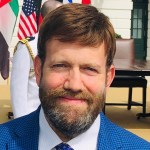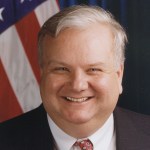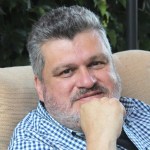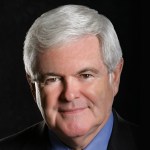All right. Next question is whose fault is this really? Who really started this? Who is the ultimate provocateur?
From my point of view? That’s a pretty straightforward question. But let’s look at it from the other side real quick, because we do have a number of people in the United States who are just parroting blindly and brainlessly Russian propaganda, the argument that the Ukrainians are led by a bunch of Nazi Jewish gay demons, we’re gonna put that to the side, because that’s as stupid as it sounds. And hopefully, for most people, the fact that that is a leading threat, and Russian propaganda is indicative of how much truth is behind the rest of what they say. But let’s focus on something a little bit more substantive, the idea that NATO has been very aggressive with the Russians, since the end of the Cold War, and it’s ultimately NATO’s fault, and specifically, the United States is fault that Ukraine is in the position that it is today. And the Russians have to do this for defensive purposes. The very, very short version is That’s utter bullshit. But let’s pick it apart. The argument is that the United States has been aggressively expanding NATO. And you know, you make an argument for that, because we have seen roughly 20 countries join NATO since the Cold War in 1992. But you have to take a look at the NATO accession process, because it is not just an issue of the United States waving a wand. What happens is the countries in question have either a vote or an act of their parliament where they apply for NATO membership. And then every individual government that is in the Alliance already has to sign off on that entrance. And then it’s not like you wave a wand then starts the ascension process, which involves military reform, civil reform, democratic transitions, moving away from a top down Cannon Fodder style military strategy, like the Russians favor, in favor of something with better logistics and a lot more forethought, in order to help these countries not just defend themselves, but move along the path towards a democratic transition, or authority democracy democracies to consolidate that transition.
Once all of that is done, once the report card is finished, the countries then formally apply. And they are again have to have either an Act of Parliament or a vote of the general population, or more likely both. And then once that is done, NATO gives it a rubber stamp. But that’s not the end of the process, either. Then the session has to be signed off by each individual NATO country with a minimum of an Act of Parliament, and in some cases, an actual plebiscite. Only then can the countries join. This is not an issue of the United States to say, hey, I want to expand to the NATO to Hungary. And it just magically happens. Everyone has to be on board with every step of the process or there is no secession. Now, you also have to consider the list of countries that have joined NATO, since the Cold War ended, is Estonia, Latvia, Lithuania, Poland, Romania, Bulgaria, to the Slovak Republic, the Czech Republic, Hungary, Macedonia, or north Macedonia. Now,
Albania, and future a session targets are potentially Ukraine, Georgia and Azerbaijan. With very few exceptions, these countries have all either been at war with or occupied by Russia. Oh, I forgot Finland, Finland to anyway at war with or occupied by Russia. So from their point of view, the defensive argument that Russia is the one that’s threatened by Latvia is just asinine. So that’s kind of piece one. Piece two is what actually happened in the early days of the war. Starting in 2020, and 2021 of Vladimir Putin in the Russian government in general started talking about the Ukrainians is not really existing that they were a made up ethnicity designed by the Nazis or by the Americans simply to put a thorn in Russia’s side. And as such, it was Russia’s manifest destiny to reclaim lands that were once it and as the time went on the number of territories that were traditional Russian territory, according to this propaganda expanded to include most of the countries that have joined NATO since 1992. And then by the time we got to December of 2021, the Russians started moving 10s of 1000s of troops onto Ukraine’s borders. And by the time we got to January and early February, we had over 100,000 By the time we got to February 22, the day that troops crossed the border we were at about probably about 130,000. On the 22nd over 70,000 troops crossed from the Russian territories into the occupied Ukrainian territories. And we all of a sudden had a mass mobilization in Belarus as well. And then on the 24th forces cross from Belarus itself, and from those occupied territories in the east, further west into Ukraine proper, and never forget that this is not the first war between Russia and Ukraine since 1992. And 2014, the Russians flat out invaded the Donbass territory in the east and also captured Crimea in the south. So anytime somebody tells you that this war is someone’s fault
Other than Russia you can tell them to go screw themselves because you’re smarter than that next question
Related

















Peter Zeihan
Geopolitical Strategist
View Video LibraryCommentary
Our commentary partners will help you reach your own conclusions on complex topics.
Water wars are an unlikely future
13 hrs ago
Peter Zeihan
Are Russia’s hypersonic missiles too good to be true?
Yesterday
Peter Zeihan
Norway sending F-16s to Ukraine
Wednesday
Peter Zeihan
Russians targeting civilian emergency crews in Ukraine
Tuesday
Peter Zeihan
Besides Russia, is NATO also to blame for the war in Ukraine?
May 19, 2023
By Straight Arrow News
Several theories propose that NATO expansion played a role in motivating Russia’s invasion of Ukraine. The argument suggests that as NATO expanded its reach into eastern Europe without explicitly excluding Ukrainian membership, Putin perceived a threat, leading to the initiation of the war.
Straight Arrow News contributor Peter Zeihan challenges this notion and sheds light on the true account that led to the outbreak of the war.
Excerpted from Peter’s May 19 “Zeihan on Geopolitics” newsletter:
The fifth question of the Q&A series is…who is the ultimate provocateur in the Ukraine War? And I really hope this answer doesn’t surprise anyone.
If Russian propaganda has led you to believe that Nazi-Jewish-gay-demons run Ukraine…maybe this isn’t the video for you. Equally as absurd is the idea that NATO and the US are responsible for Ukraine being in this situation.
The U.S. has seen NATO growth since the Cold War’s end; roughly 20 countries have joined, and many of them are former Soviet territories. But joining NATO is no cakewalk. It’s a grueling process and must be unanimously agreed upon by all members.
So the idea that NATO started this war and has been plotting to eliminate Russia is a tad far-stretched. Oh, and when you actively send tens of thousands of troops into another country, it’s pretty hard to get the red off your hands.
All right. Next question is whose fault is this really? Who really started this? Who is the ultimate provocateur?
From my point of view? That’s a pretty straightforward question. But let’s look at it from the other side real quick, because we do have a number of people in the United States who are just parroting blindly and brainlessly Russian propaganda, the argument that the Ukrainians are led by a bunch of Nazi Jewish gay demons, we’re gonna put that to the side, because that’s as stupid as it sounds. And hopefully, for most people, the fact that that is a leading threat, and Russian propaganda is indicative of how much truth is behind the rest of what they say. But let’s focus on something a little bit more substantive, the idea that NATO has been very aggressive with the Russians, since the end of the Cold War, and it’s ultimately NATO’s fault, and specifically, the United States is fault that Ukraine is in the position that it is today. And the Russians have to do this for defensive purposes. The very, very short version is That’s utter bullshit. But let’s pick it apart. The argument is that the United States has been aggressively expanding NATO. And you know, you make an argument for that, because we have seen roughly 20 countries join NATO since the Cold War in 1992. But you have to take a look at the NATO accession process, because it is not just an issue of the United States waving a wand. What happens is the countries in question have either a vote or an act of their parliament where they apply for NATO membership. And then every individual government that is in the Alliance already has to sign off on that entrance. And then it’s not like you wave a wand then starts the ascension process, which involves military reform, civil reform, democratic transitions, moving away from a top down Cannon Fodder style military strategy, like the Russians favor, in favor of something with better logistics and a lot more forethought, in order to help these countries not just defend themselves, but move along the path towards a democratic transition, or authority democracy democracies to consolidate that transition.
Once all of that is done, once the report card is finished, the countries then formally apply. And they are again have to have either an Act of Parliament or a vote of the general population, or more likely both. And then once that is done, NATO gives it a rubber stamp. But that’s not the end of the process, either. Then the session has to be signed off by each individual NATO country with a minimum of an Act of Parliament, and in some cases, an actual plebiscite. Only then can the countries join. This is not an issue of the United States to say, hey, I want to expand to the NATO to Hungary. And it just magically happens. Everyone has to be on board with every step of the process or there is no secession. Now, you also have to consider the list of countries that have joined NATO, since the Cold War ended, is Estonia, Latvia, Lithuania, Poland, Romania, Bulgaria, to the Slovak Republic, the Czech Republic, Hungary, Macedonia, or north Macedonia. Now,
Albania, and future a session targets are potentially Ukraine, Georgia and Azerbaijan. With very few exceptions, these countries have all either been at war with or occupied by Russia. Oh, I forgot Finland, Finland to anyway at war with or occupied by Russia. So from their point of view, the defensive argument that Russia is the one that’s threatened by Latvia is just asinine. So that’s kind of piece one. Piece two is what actually happened in the early days of the war. Starting in 2020, and 2021 of Vladimir Putin in the Russian government in general started talking about the Ukrainians is not really existing that they were a made up ethnicity designed by the Nazis or by the Americans simply to put a thorn in Russia’s side. And as such, it was Russia’s manifest destiny to reclaim lands that were once it and as the time went on the number of territories that were traditional Russian territory, according to this propaganda expanded to include most of the countries that have joined NATO since 1992. And then by the time we got to December of 2021, the Russians started moving 10s of 1000s of troops onto Ukraine’s borders. And by the time we got to January and early February, we had over 100,000 By the time we got to February 22, the day that troops crossed the border we were at about probably about 130,000. On the 22nd over 70,000 troops crossed from the Russian territories into the occupied Ukrainian territories. And we all of a sudden had a mass mobilization in Belarus as well. And then on the 24th forces cross from Belarus itself, and from those occupied territories in the east, further west into Ukraine proper, and never forget that this is not the first war between Russia and Ukraine since 1992. And 2014, the Russians flat out invaded the Donbass territory in the east and also captured Crimea in the south. So anytime somebody tells you that this war is someone’s fault
Other than Russia you can tell them to go screw themselves because you’re smarter than that next question
Related
Water wars are an unlikely future
Foreign policy writers have long warned of the possibility that clean drinking water might become “the next oil” — that is, that major wars might be fought around the globe over access to potable water. With expanding populations and finite water supplies, these critics argue that humans will inevitably fight each other to secure drinking…
13 hrs ago
Are Russia’s hypersonic missiles too good to be true?
Russia has reportedly used five of its new hypersonic Zircon missiles to target Kyiv since the beginning of 2024. Russia claims that these sea-based missiles, boasting a range of 625 miles and capable of traveling at nine times the speed of sound, are part of its family of “superweapons” aimed at penetrating the U.S. missile…
Yesterday
Norway sending F-16s to Ukraine
In recent months, the need for Ukrainian air defenses has grown more urgent. As U.S. aid is unable to pass through Congress, Ukraine’s European allies have been stepping up to provide what they can. Norway is now the latest nation to pledge F-16s to Ukraine, not only to defend Ukrainian airspace, but also for the…
Wednesday
Russians targeting civilian emergency crews in Ukraine
Russian forces are applying a brutal tactic in their war on Ukraine. The tactic, “double tap,” includes an initial strike on a specific civilian target of some value, followed by a second strike intentionally designed to kill the emergency first responders, medical staff, firefighters, and other key personnel dispatched to the location of the first…
Tuesday
Iranian strike on Israel not intended to provoke regional war
Rising tensions in the Middle East boiled over again on Saturday, April 13, when Iran launched a direct attack against Israel with over 300 combined armed drones, ballistic missiles and cruise missiles. The attack follows decades of simmering conflict between the two nations, amplified most recently by Israel’s invasion of Gaza and a strike on…
Monday
Underreported stories from each side
Elon Musk to fund new First Amendment campaign to combat ‘relentless attacks on free speech’
6 sources | 0% from the left
Getty Images
Biden administration restricts oil and gas leasing in 13 million acres of Alaska’s petroleum reserve
28 sources | 5% from the right
Reuters
Latest Stories
Argentina asks to join NATO as Milei looks to enhance security, strengthen ties
Watch 1:57
7 hrs ago
Utah students protest 'furries,' school admin deny problem
Watch 2:10
8 hrs ago
Trump’s ‘hush money’ trial: Legal experts debate name coined by media.
Watch 4:08
9 hrs ago
Black Chicagoans feel neglected as millions funneled to migrant crisis
Watch 3:31
9 hrs ago
Congress wants to curtail ‘judge shopping.’ Can it act before the election?
Watch 4:18
10 hrs ago
Popular Opinions
In addition to the facts, we believe it’s vital to hear perspectives from all sides of the political spectrum.
Biden using taxpayer dollars to buy voters is indefensible
12 hrs ago
Star Parker
Support democracy or Trump, but you can’t do both
14 hrs ago
Dr. Rashad Richey
Subsidizing demand won’t fix real problems
Yesterday
Timothy Carney
Why I doubt Trump will be convicted in hush money case
Yesterday
Jordan Reid